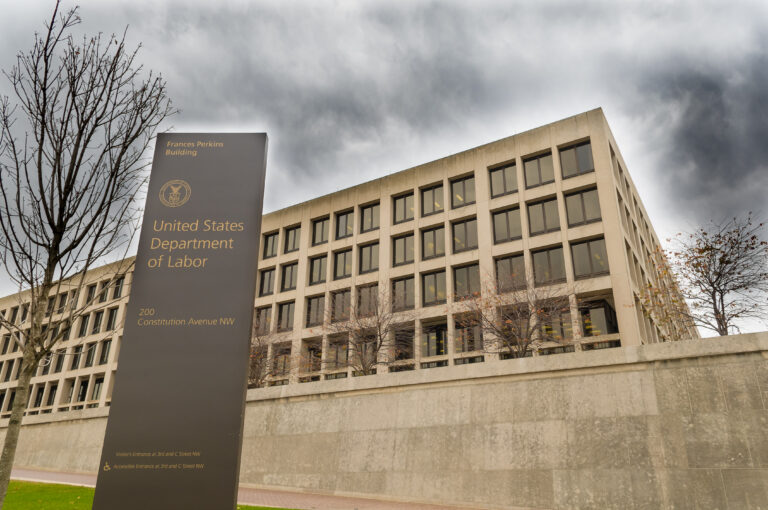Yesterday we summarized the briefs submitted by petitioner New Prime Inc. and respondent Dominic Oliveira in New Prime Inc. v. Oliveira, the latest case before the Supreme Court to address the extent of the Federal Arbitration Act (FAA)’s reach in the employment context. Today we summarize the briefs submitted by amici curiae for New Prime, and next week we will summarize those submitted for Oliveira.
Amicus Briefs for New Prime
American Trucking Associations, Inc. writes to explain why both questions before the Court should be decided in favor of New Prime so that carriers and operators alike can reap the benefits of their bargained-for arbitration agreements. First, deciding that a court must rule on arbitrability would nullify arbitration’s advantage of avoiding the court system. Second, finding that independent contractors are included in the Section 1 exemption would deprive contractors and companies of the guarantee of arbitration even if both parties agreed to it.
The Cato Institute lends additional support to New Prime’s argument that Congress used derivatives of the root word “employ” in 1925 to refer to common-law employment relationships. The 1908 Federal Employers Liability Act (FELA) and contemporaneous state workers’ compensation schemes covered “employees” but not contractors. Dictionaries from that time also restricted “employee” to its common-law meaning and contained separate definitions for “independent contractor.”
Customized Logistics and Delivery Association explains that arbitration is not only cost-effective and efficient for both sides, but also provides a fair alternative to litigation more likely to afford parties their “day in court.” Claimants’ success and award rates in arbitration are roughly equivalent to that in litigation. However, few employment cases in the onerous litigation process end up making it to trial. Claimants in arbitration have a better opportunity to get an actual decision resolving their dispute. In order to reap these benefits of arbitration, courts should also not look beyond the four corners of the contract to determine whether an agreement qualifies for the Section 1 exemption.
The New England Legal Foundation (NELF) uses canons of statutory construction to find that “contracts of employment” refers only to common-law employment agreements. Applying the canon of noscitur a sociis (“it is known by its associates”), NELF concludes that “contracts of employment” draws meaning from “seamen” and “railroad employees,” two types of transportation employees. Deploying the canon of ejusdem generis (“of the same kind”), NELF determines that “seamen” and “railroad employees” similarly limit the catch-all phrase “any other class of workers” to transportation workers in common-law employment relationships. The purpose of the FAA was to facilitate rather than limit arbitration, so the exemption should be construed narrowly. While legislative history of the Section 1 exemption is scant, the exemption was likely designed to allow transportation employees, who faced particular dangers on the job, to pursue their statutory right as employees under the FELA and the 1920 Jones Act to sue their employer in court for work-related injuries.
The U.S. Chamber of Commerce and the Society for Human Resource Management write that independent contracting is a growing and important component of the modern economy whose participants rely upon the enforceability of their contracts. Companies and independent contractors choose arbitration as a dispute resolution mechanism because it “is speedy, fair, inexpensive, and less adversarial than litigation in court.” Reading “contracts of employment” to include independent contractor arrangements would deprive an entire sector of workers of the benefit of their agreements. The applicability of the Section 1 exemption should be decided by the language in the contract, not the economic realities of the relationship, because an extensive fact-based inquiry would undercut arbitration’s advantages of speed and simplicity.










Daily News & Commentary
Start your day with our roundup of the latest labor developments. See all
January 5
Minor league hockey players strike and win new deal; Hochul endorses no tax on tips; Trump administration drops appeal concerning layoffs.
December 22
Worker-friendly legislation enacted in New York; UW Professor wins free speech case; Trucking company ordered to pay $23 million to Teamsters.
December 21
Argentine unions march against labor law reform; WNBA players vote to authorize a strike; and the NLRB prepares to clear its backlog.
December 19
Labor law professors file an amici curiae and the NLRB regains quorum.
December 18
New Jersey adopts disparate impact rules; Teamsters oppose railroad merger; court pauses more shutdown layoffs.
December 17
The TSA suspends a labor union representing 47,000 officers for a second time; the Trump administration seeks to recruit over 1,000 artificial intelligence experts to the federal workforce; and the New York Times reports on the tumultuous changes that U.S. labor relations has seen over the past year.